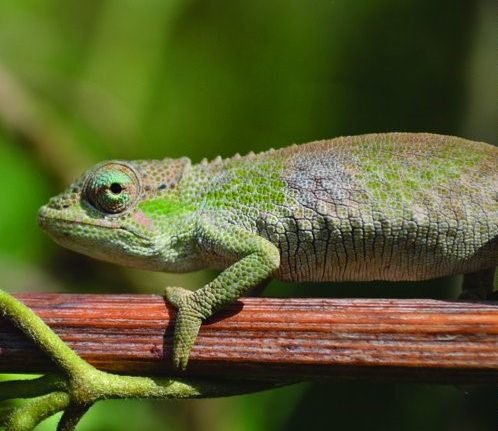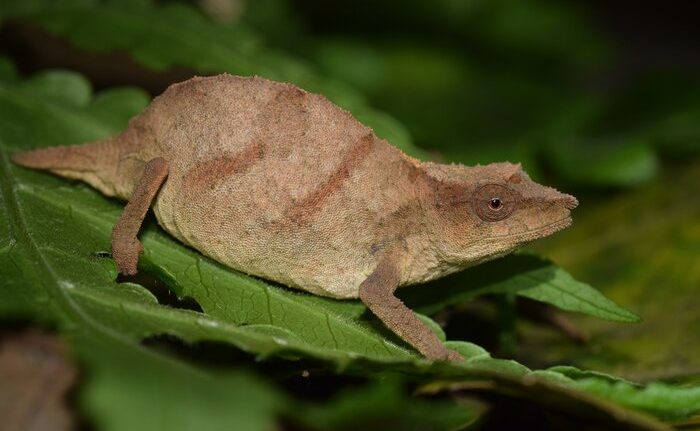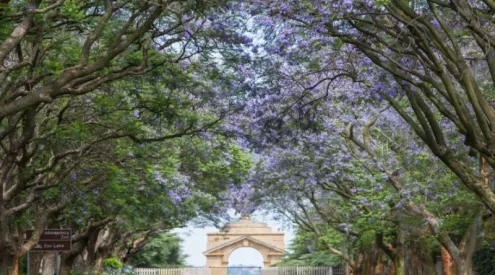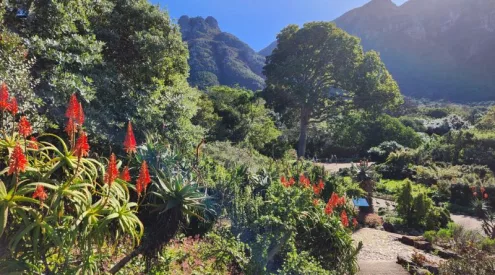There were fears that the Chapman’s pygmy chameleon (Rhampholeon chapmanorum) could be extinct before it was found clinging to survival in small patches of rainforest in southern Malawi. The rare chameleon is a tiny species endemic to the rainforests of southern Malawi, only growing 6cm in length.
The species was first described by scientists in 1992 only, but the destruction of forest habitat for the agricultural growth of maize and cassava put the species on the brink of extinction, Timeslive reports.
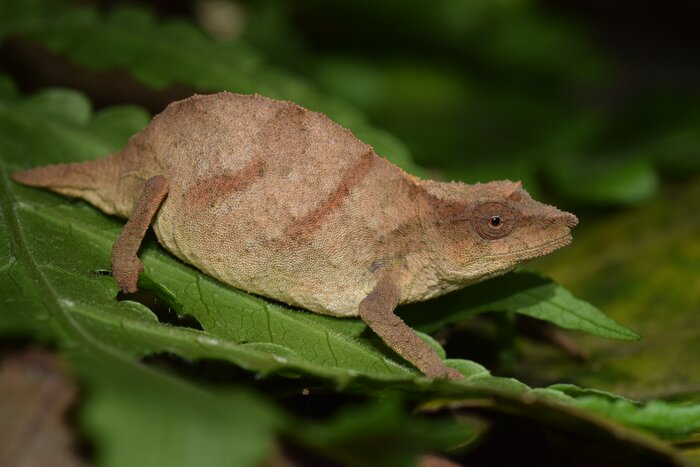
Picture: Krystal Tolley
A 2014 conservation assessment led Wits University honorary researcher Prof Krystal Tolley, which led to the Chapman’s pygmy chameleon as ‘critically endangered’ on the IUCN Red List of Threatened Species.
With fears that the species may have been relegated to the brink of extinction, Tolley led a team to investigate if the species still survives in the wild. The team was comprised of researchers from the South African National Biodiversity Insititute and the Museums of Malawi, who turned to the website, Crowdfunding and RocketHub to raise money for the project.

Prof. Krystal Tolley lead the research team in Malawi. Picture: Twitter/Gary Brown
The campaign managed to raise R80 000 from donations, sufficient to fund surveys of three forest patches where the species are most likely to occur. Faced with fears that the chameleon had been relegated to extinction in the wild, the team was relieved to find it in all three of the surveillance sites.
To investigate the genetic health of these populations, Tolley collected tissue samples from chameleons in each forest patch. The genetic analyses indicated that these populations are unable to move between forest patches to breed because their habitat was highly fragmented. This could have adverse consequences as the genetic diversity of the population will be lost over time, posing an additional threat to the survival of the species.
“The loss of forest habitat requires urgent conservation action, including halting of forest destruction and recovery of habitat to promote connectivity between forest patches,” says Tolley. “Without action, the species may reach a point from which it cannot return.”
Comparing current satellite images of the species known habitat with those taken in the 1980s revealed significant forest loss. The remaining forests were highly fragmented. Estimates suggest that the forest along with the chameleon population has shrunk by 80% since the 1980s.
The research team suggests that the remaining habitat be included in the Matandwe Forest Reserve and proclaimed as a Key Biodiversity Area and introducing measures to ensure its protection. They also suggest regular surveys of the population to monitor their numbers and genetic health.
Malawi is fast becoming a shining star of conservation in Southern Africa with the recent reintroduction of African wild dogs and an initiative to expand the distribution of endangered cycad species.
ALSO READ
Newly described chameleon from Madagascar may be world’s smallest reptile










